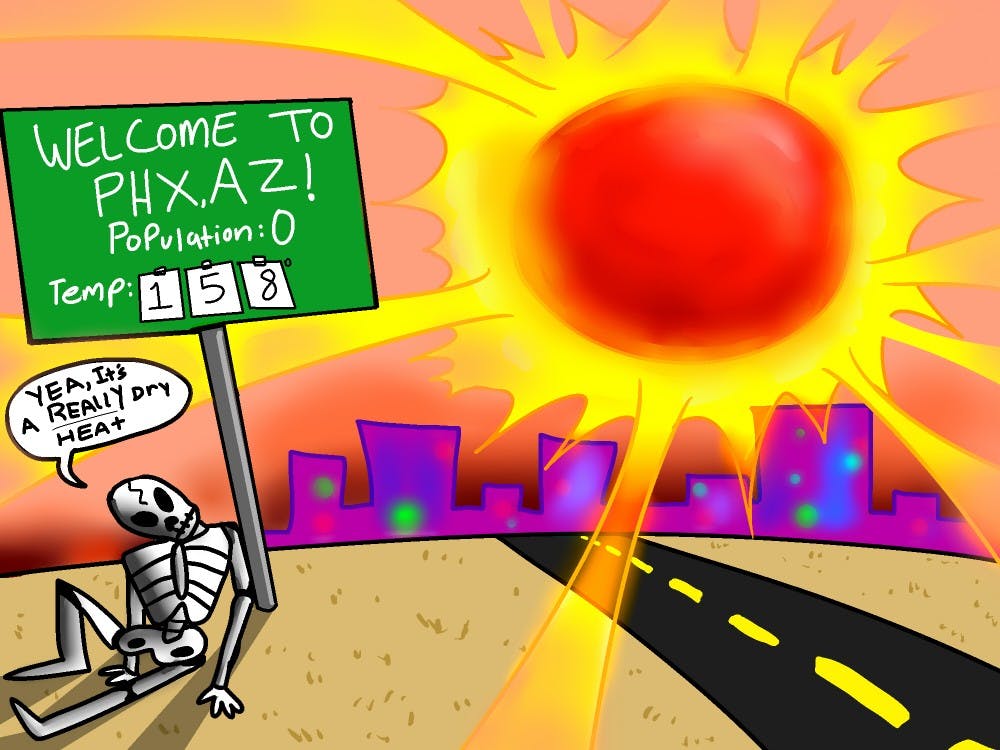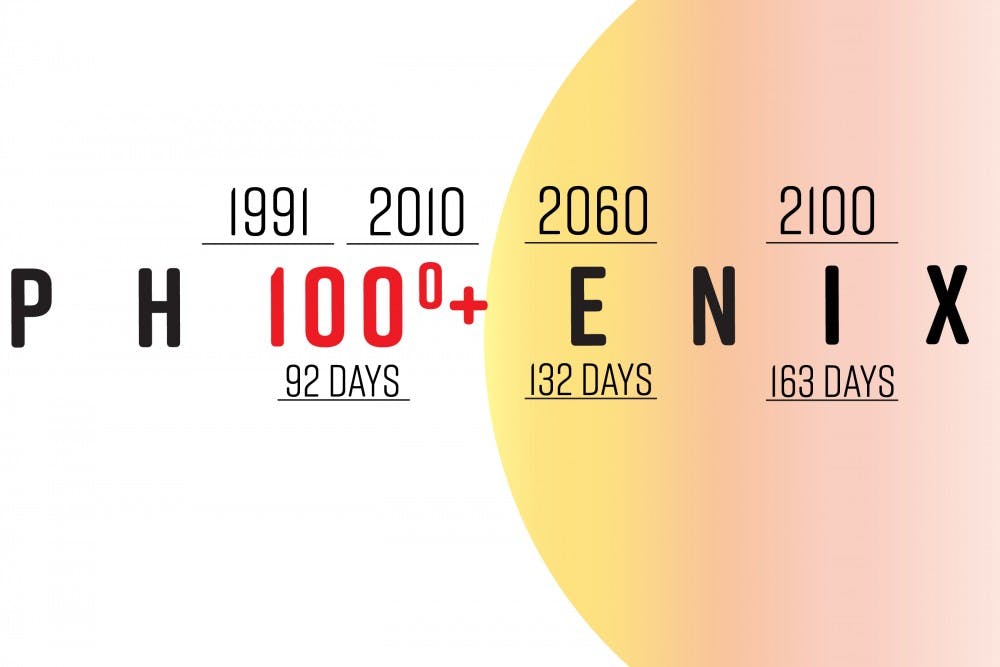A September Vice article claimed that an average temperature increase of 3-to-5 degrees by 2050 could make Phoenix "unlivable."
The article says the number of days over 100 degrees the Valley experiences could increase to 132 per year by that point, up from 92 in 2016.
But ASU geographical sciences and urban planning professor David Hondula stated that while climate change is an issue, Phoenix will remain relatively unchanged by 2050.
"The best idea of what Phoenix will look like in 2050 is what Phoenix looks like in 2017."
Hondula says instead of focusing on the increasing temperatures, Phoenix officials should be focused on heat-related issues such as heat stroke and dehydration. This also includes the spike of heat-related deaths from 85 in 2015 to 130 in 2016.
The Vice article states that as much as 20 percent of the Colorado River could dry up by 2050. This would have a drastic effect on Phoenicians, as there is projected to be a 3.2 million-acre-foot shortfall of water by 2060. This would call for extreme water rationing, as Phoenix shares water from the Colorado River with Southern California.
ASU landscape architecture professor Chingwen Cheng said that increasing temperatures will have a large effect on city planning going forward.
"Climate change adds to the uncertainty for planning because now there is ... a higher frequency for extreme events," Cheng said, referring to the fact that increasing temperatures creates more hurricanes, wildfires and other extreme weather events.
A spokesperson from the Phoenix branch of the National Weather Service said that there is "difficulty in projecting" long-term effects of climate change for the Valley.
Phoenix already saw record temperatures this past summer, and the following summers are only expected to be warmer.
To address these rising temperatures, Hondula said there will be a need for increased shade, reliable electricity for air conditioners and adequate space in homeless shelters.
"We need to be thinking about the large-scale, long-term changes to the design of the city and the resources we have in place," he said.
Reach the reporter at ryanhoodmedia@gmail.com or follow @rhoodofficial on Twitter.
Like State Press on Facebook and follow @statepress on Twitter.





